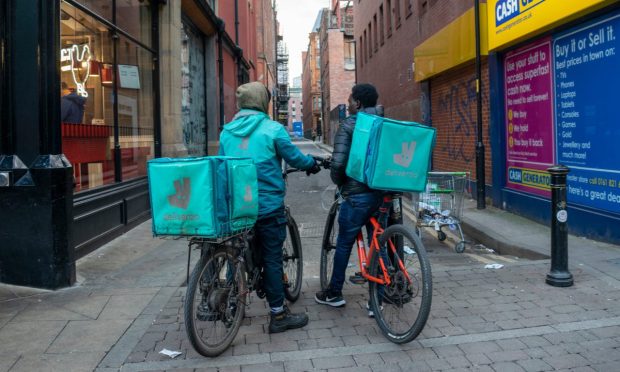UK Rapid Grocery Market Booms as Brits Lean Toward At-Home Delivery

Following deals with Just Eat, Co-op and Sainsbury’s have become the latest U.K. supermarket brands to partner with an aggregator to provide rapid delivery service to clients.
This comes on the heels of a steady string of aggregator-supermarket tie-ups that give consumers access to convenient, on-demand grocery delivery.
In fact, both Sainsbury’s and Co-op have previously inked similar deals with Uber Eats and Deliveroo, as have other major supermarket chains in the U.K.
For these businesses, aggregator partnerships are relatively risk-free. Grocers don’t take on the costs of building or maintaining a distribution network, meaning they aren’t left out of pocket if demand doesn’t materialize.
Moreover, while the competitive q-commerce industry experiences growing pains, the concept appears here to stay. And by partnering with the delivery giants like Just Eat, supermarkets ensure they still have a share of the market, which might otherwise be dominated by younger dark store rivals like GoPuff and Getir.
Others, however, are choosing to grow their own in-house online rapid delivery platforms, intensifying competition between the likes of Just Eat, Uber Eats and Deliveroo and trusted British retailers.
For instance, online supermarket Ocado, which recently reported putting two new warehouses in the U.K. on hold following a sharp decline in orders, has continued to grow its q-commerce offering, Zoom by Ocado, expanding to new sites in east London last year as part of a wider rollout across the country.
And just this month, Tesco announced the expansion of its rapid delivery service, Whoosh, to 200 stores, per Grocery Gazette, serving a total of 800 stores by the end of February.
First launched in 2021, the service costs £2.99 and requires no minimum spend on a range of products, from fruit and vegetables and alcohol to evening meals and everyday essentials items.
“We want to help the nation avoid disappointing dinners and lackluster lunches. Whatever they need, Whoosh can deliver in as little as 30 minutes,” Tesco chief customer officer, Alessandra Bellini, reportedly said.
Brits’ Strong Preference for At-Home Delivery
Despite inflationary pressures on food prices and a drop in order volumes, grocery delivery seems to be keeping firms in business.
London-based food delivery service Deliveroo, for example, reported earlier this year that while skyrocketing prices have negatively impacted shoppers’ loyalty, more grocery shopping was driving frequency.
“One thing that’s also helped a bit is grocery. Grocery, as we introduced before COVID, really has been habitual for people, and I think what we’re seeing is that instead of maybe doing a weekly shop, people are splitting up their previous weekly shop into smaller baskets,” Deliveroo CEO Will Shu told analysts on a call.
And in the U.K. where preference for shipping purchases directly home is high among local shoppers, it is likely that the delivery business will remain strong amid consumer demand for instant convenience.
In fact, according to data from the U.K. edition of the “Global Digital Shopping Playbook,” British eCommerce shoppers’ preference for getting purchases delivered directly to their homes was 10% higher than the 71% average across all six countries surveyed.
The report, a PYMNTS and Cybersource collaboration, also revealed that U.K. consumers were 24% less likely than the average consumer in all six countries to go in-store to pick up their eCommerce purchases, a trend that seems to be gaining momentum in the grocery space.
The report stated, however, that British retailers are not doing enough to cash in on the opportunity, with only 54% offering a mobile app for delivery or pickup, 7% below the sample average.
In a recent interview with PYMNTS, Denise Burkett-Stus, head of Cybersource Europe, recommended retailers — and perhaps grocers, too — to take a cue from Amazon and its mastery of last-mile delivery.
“Amazon will tell me exactly when I can have [a product] delivered and there’s no friction in my payment experience. My card details are stored there, and it just goes through. It’s perfect,” Burkett-Stus said.
Learn more: U.K. Consumers Encounter 11% More Shopping Friction Than the Average Consumer
For all PYMNTS EMEA coverage, subscribe to the daily EMEA Newsletter.